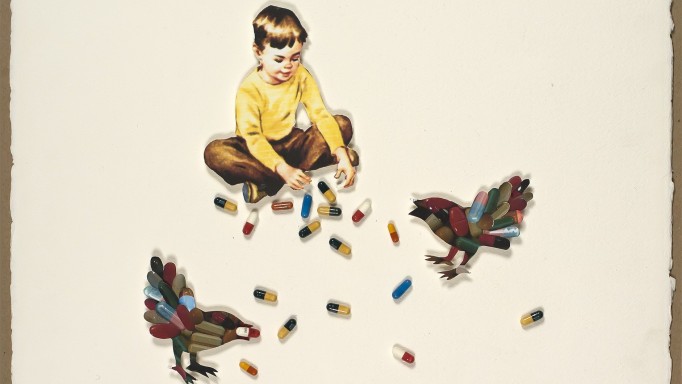Having healthy kidneys contributes to a good quality of life. The kidneys have numerous functions, including metabolizing some commonly used HIV medications. Kidney function tends to diminish as people age, but you can take steps to keep them in good working order.
What do the kidneys do?
The kidneys are bean-shaped organs located halfway up the back on both sides of the spine. The adrenal glands sit on top of the kidneys. The organs’ primary function is to filter the blood. The kidneys contain about a million nephrons, tiny structures made up of a network of small capillaries, known as a glomerulus, and a tubule. The glomeruli extract waste products and excess water and send them to the bladder to be excreted in urine. The tubules reabsorb fluid and necessary minerals and nutrients, which are returned to the bloodstream. Over 24 hours, the kidneys filter the body’s full volume of blood around 300 times.
In addition, the kidneys also maintain levels of acids, salts and minerals in the blood and release hormones to help keep them in balance. They produce erythropoietin to stimulate production of new red blood cells, renin to regulate blood pressure and calcitriol to maintain proper calcium levels.
What is kidney disease?
Kidney disease occurs when the organs’ ability to carry out their work, known as renal function, is impaired. Acute kidney failure can occur suddenly—for example, due to toxins or physical injury. Chronic kidney disease (CKD), in contrast, progresses slowly over time. Fanconi syndrome is a disorder of the kidney tubules that affects reabsorption.
Early kidney disease often has no symptoms. As CKD progresses, symptoms may include frequent urination, foamy or unusually colored urine, fatigue, brain fog, nausea, muscle cramps and swollen feet, ankles or hands (edema). Advanced kidney damage can lead to heart disease and bone loss (osteoporosis).
Older age is the biggest risk factor for CKD. Men are more likely to develop kidney disease than women, and Black people have a substantially higher rate compared with other racial groups. Other risk factors include family history, diabetes, chronic hepatitis B or C, some autoimmune diseases and use of certain medications (including some commonly used pain relievers). High blood pressure (hypertension) is both a leading cause of kidney damage and a sign of kidney impairment. High blood glucose levels and high blood pressure can damage the small blood vessels in the kidneys where filtration occurs.
How does HIV affect the kidneys?
Kidney disease is more common among people living with HIV compared to their HIV-negative peers. Studies have shown that up to one third of people living with HIV have abnormal kidney function, but some of these were done before effective HIV treatment was widely available. HIV can directly harm the kidneys (known as HIV-associated nephropathy, or HIVAN) and cause damaging inflammation throughout the body. People with a higher viral load and a lower CD4 T-cell count are more likely to develop kidney disease, so starting antiretroviral treatment promptly and maintaining viral suppression is one of the best ways to preserve kidney function.
However, certain HIV medications can cause kidney problems themselves. Among modern antiretrovirals, this occurs most often with tenofovir disoproxil fumarate, or TDF (sold alone as Viread and a component of Truvada and several older single-tablet regimens). A newer version, tenofovir alafenamide, or TAF (a component of Descovy and newer single-tablet regimens, including Biktarvy) is easier on the kidneys and bones.
Kidney damage is most likely to occur among people with HIV who use TDF in regimens that contain a booster to raise drug levels. Kidney problems are uncommon among HIV-negative people taking Truvada for pre-exposure prophylaxis (PrEP), a group that is typically younger and healthier than those using TDF for treatment.
Some older HIV drugs, such as AZT (Retrovir), ddI (Videx) and d4T (Zerit), can also cause kidney toxicity, and long-term survivors may have lingering kidney problems related to earlier use. Protease inhibitors, especially indinavir (Crixivan), can cause kidney stones. In addition to antiretrovirals, several drugs used to treat opportunistic illnesses can harm the kidneys, including cidofovir (Vistide) or foscarnet (Foscavir) for cytomegalovirus retinitis, sulfamethoxazole/trimethoprim (Bactrim) for Pneumocystis pneumonia and amphotericin B for fungal infections.
How is kidney disease diagnosed?
People with two healthy kidneys have substantial reserve function, so kidney disease can progress for years before it causes symptoms. Routine monitoring can help detect CKD at an early stage, before it causes permanent kidney failure.
Renal function is assessed in various ways. The presence of protein or blood in the urine is one early sign of kidney problems. Blood urea nitrogen (BUN) is a waste product that can build up in the blood when kidney filtering capacity is impaired. Creatinine, a waste product of muscle protein breakdown, can also build up when the kidneys are not working properly, but an elevated creatinine level can also have other causes, such as an intense workout. Instead, doctors use creatine levels along with age, sex and body size to calculate the estimated glomerular filtration rate (eGFR); Black race is no longer included in the calculation.
A normal eGFR for a healthy adult is 90 to120 milliliters per minute. Women typically have a slightly lower eGFR than men, Black people tend to have a higher eGFR than white people and eGFR usually decreases with age. An eGFR between 60 and 90 indicates early (Stage 2) CKD, but the kidneys still mostly function well. The eGFR falls as people progress through the stages of kidney disease. People with Stage 3, or moderate, kidney disease (eGFR 30 to 59) may experience symptoms. Stage 4 (eGFR 15 to 29) indicates more severe kidney damage. An eGFR below 15 (Stage 5) indicates kidney failure, or end-stage renal disease (ESRD).
Ultrasound or CT scans and kidney biopsies may also be done to diagnose HIVAN, kidney cancer (renal cell carcinoma), kidney cysts, kidney stones and other problems.
How is kidney disease treated?
HIV treatment guidelines recommend that kidney function should be assessed at the time of HIV diagnosis, measured before starting a new HIV treatment or PrEP regimen and monitored regularly thereafter. Your doctor may refer you to a kidney specialist, known as a nephrologist.
People with impaired kidney function and those at high risk should avoid drugs linked to kidney toxicity or use them with caution, possibly including dose adjustment. Fortunately, drug-related kidney problems often resolve if they are caught early and the offending medication is stopped.
CKD treatment focuses on managing comorbidities to slow disease progression. Various types of drugs are used to control high blood pressure and diabetes, and other medications can help alleviate symptoms such as edema or anemia. A balanced diet, adequate hydration, exercise, weight loss, smoking cessation and limited alcohol consumption all contribute to kidney health. Some people with kidney disease may need to reduce their protein intake and avoid sodium, phosphorus and potassium. Again, antiretroviral treatment protects the kidneys from direct damage due to HIV and reduces inflammation.
Once people progress to end-stage renal disease, kidney damage is likely to be irreversible, and they may need hemodialysis (using a machine to filter the blood) or a kidney transplant. People with HIV can now both donate and receive kidney transplants with good outcomes, but donor organs are scarce. Diagnosing and managing kidney problems early is therefore key to preventing life-threatening kidney failure.
Last Reviewed: August 24, 2024














